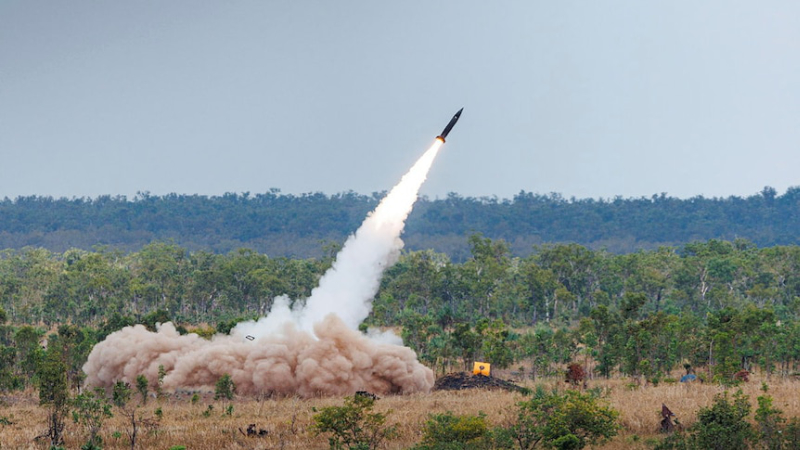
UPDATE: Australia has just test-fired a new US-made long-range missile, raising urgent questions about regional security dynamics. The missile, known as the Precision Strike Missile (PrSM), boasts a range of 500 kilometers, which can easily extend to Indonesian targets, stirring concerns in Jakarta.
This missile test, conducted in late July, comes as 35,000 troops from 19 nations engage in military exercises dubbed Talisman Sabre in Queensland. It marks a significant moment as Defence Industry Minister Pat Conroy stated, “The Australian Army enters the missile age.”
The implications of this development are profound. Observers are questioning whether Indonesia perceives this missile test as a direct threat, especially given historical suspicions regarding Australia’s military intentions. Indonesian media reactions have been notably subdued, but the potential for heightened tensions looms as Australia enhances its military capabilities in the Indo-Pacific region.
Official statements reveal a strategy of deterrence, with US Army Secretary Dan Driscoll emphasizing that the primary threat is perceived to be from China. “We are actively designing our army to respond to any threat from China,” Driscoll confirmed. Yet, Indonesia has maintained a complex relationship with China, recently celebrating 75 years of diplomatic relations and joining the BRICS trade bloc, which critics argue signals a pivot away from Western alliances.
The timing of this missile test is particularly notable. In February, the Chinese Navy conducted live-fire exercises near Australia, which had already sparked diplomatic protests from Canberra. Analysts are now questioning whether Australia’s missile launch could be interpreted as a rehearsal for potential conflicts, further complicating regional security.
Local experts, including Professor Tim Lindsey from the Lowy Institute, highlight the historical context of Australian-Indonesian relations, noting lingering suspicions stemming from Australia’s role in East Timor’s independence. Australian attitudes towards Indonesia have evolved from admiration to skepticism, making the region’s diplomatic landscape increasingly fragile.
While the Australian military showcases its capabilities, the Indonesian public remains divided. Many Indonesians are wary, fueled by nationalistic rhetoric from leaders like President Prabowo Subianto, who frequently invokes fears of foreign interference. His claims about Western influence have not gone unnoticed, with a significant portion of the population expressing distrust towards Australia’s military maneuvers.
As Australia embraces new military technologies, the potential for misunderstanding and conflict escalates. Military exercises, while intended for deterrence, may instead deepen suspicions. The recent missile test signals a new era in the Indo-Pacific, yet raises critical questions about the future of Australian-Indonesian relations.
Moving forward, attention will be focused on Indonesia’s response to this missile launch and ongoing military exercises. As regional dynamics evolve, both countries will need to navigate these complex waters carefully, balancing military readiness with diplomatic outreach.
In conclusion, as tensions rise and military capabilities expand, the need for open communication and trust-building becomes more urgent than ever. The world watches closely as Australia asserts its position in the Indo-Pacific, underscoring the delicate balance between deterrence and diplomacy.





